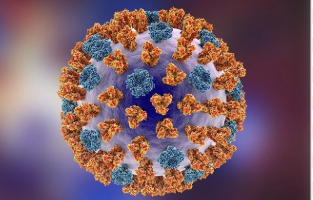Influenza Trends and Health Advisory 2024
Recent data from the State Public Health Laboratory (SPHL) marks important respiratory illness trends. Influenza A and B viruses are the primary culprits, affecting 75.4% of patients with Influenza-Like Illness (ILI). The report indicates a notable increase in fever cases during the winter and monsoon months across Tamil Nadu.
Influenza Virus Circulation
Testing of 326 respiratory samples revealed that Influenza A (H1N1) accounts for 44% of reported cases. Influenza B and other strains are also present but to a lesser extent. The presence of Respiratory Syncytial Virus (RSV) A and B was noted in 9% of cases, which cause mild illness.
Current COVID-19 Situation
SARS-CoV-2 is circulating at an all-time low, which suggests a reduced risk of severe COVID-19 cases in the community. The focus remains on influenza viruses, which are currently more prevalent.
The Integrated Disease Surveillance Programme indicates a seasonal pattern. Illnesses peaked during the monsoon months following a decline in summer. This trend marks the importance of monitoring respiratory illnesses throughout the year.
Testing Methodology
The SPHL employed Multiplex RT-PCR to analyse respiratory samples. This method tests for over ten viruses, including various strains of influenza and RSV. All tested ILI cases were classified as mild, with no hospitalisations required.
The Directorate of Public Health recommends that patients experiencing fever consult nearby health facilities. Primary Health Centres in both rural and urban areas are equipped to manage fever effectively. Early treatment is crucial for better health outcomes.
Patient Categorisation
Patients with Acute Respiratory Infections are categorised into three groups:
- Category A – Mild cases, typically managed as outpatients.
- Category B – Moderate cases, requiring closer monitoring.
- Category C – Severe cases, especially among the elderly with comorbidities.
Treatment Options Available
Oseltamivir is suggested for treating severe influenza cases. It is effective for patients in Category C who exhibit respiratory distress. Proper medical guidance is essential for managing symptoms and preventing complications.
Conclusion on Influenza Management
The SPHL’s findings tell the importance of vigilance during respiratory illness seasons. Public health initiatives focus on education and access to healthcare services. Awareness and timely intervention can mitigate the impact of influenza and other respiratory viruses.
Important Facts for Exams:
- SPHL – The State Public Health Laboratory conducts testing for respiratory illnesses. It monitors influenza trends and provides crucial data on viral circulation in the community.
- ILI – Influenza-Like Illness refers to symptoms resembling influenza. It includes respiratory infections that may be caused by various viruses including Influenza A and B.
- Multiplex RT-PCR – Multiplex RT-PCR is a diagnostic technique. It allows simultaneous detection of multiple respiratory viruses from a single sample, enhancing diagnostic efficiency in public health.
Month: Current Affairs - November, 2024
Category: Science & Technology Current Affairs


